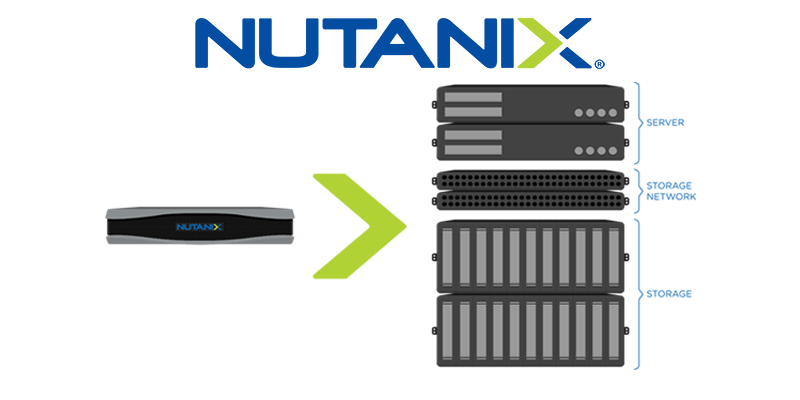Imagine simplifying your entire data center infrastructure into a single, manageable platform. Sound too good to be true? In today’s complex IT landscape, businesses are constantly grappling with the challenges of managing disparate systems, escalating costs, and the ever-present need for greater agility.
That’s where Nutanix HCI (Hyperconverged Infrastructure) comes in. Nutanix HCI integrates compute, storage, networking, and virtualization resources into a cohesive, software-defined solution, dramatically simplifying IT operations and paving the way for cloud-like efficiency on-premises. This article will delve into the core benefits of Nutanix HCI, exploring how it streamlines management, reduces costs, enhances performance, and empowers organizations to focus on innovation rather than infrastructure headaches.
Get ready to discover how Nutanix HCI can transform your IT and unlock new levels of business agility.
Understanding Nutanix HCI: A Deep Dive
Hyperconverged infrastructure (HCI) is shaking up the data center game. Nutanix, a leader in this space, offers a powerful solution for businesses seeking to streamline their IT operations. This guide explores the nuances of Nutanix HCI.
At its core, HCI converges traditional data center elements into a single, integrated system. This includes compute, storage, and networking, all managed through a unified software layer. This simplifies management and lowers costs.
Nutanix HCI goes beyond simple consolidation. It delivers a cloud-like experience on-premises, offering agility and scalability previously only achievable in public clouds. This is a substantial benefit for many companies.
Consider a retail chain expanding rapidly. Nutanix lets them deploy new stores’ IT infrastructure quickly and uniformly, maintaining operational consistency. It eliminates the complexity of managing individual components.
Key Components of Nutanix HCI
Nutanix HCI is built on two primary software components: the Acropolis Hypervisor (AHV) and the Distributed Storage Fabric (DSF). These work together to provide a complete infrastructure solution.
AHV is Nutanix’s built-in hypervisor, offering a streamlined virtualization experience. While Nutanix supports other hypervisors, AHV provides tight integration and optimized performance. It’s a central part of the ecosystem.
The DSF provides a software-defined storage layer that pools resources across all nodes in the cluster. This creates a highly resilient and scalable storage environment, removing traditional storage bottlenecks.
Picture a video editing firm dealing with huge files. The DSF provides fast access, allowing editors to work smoothly. This high performance benefits data-intensive operations. This also helps with real time analysis.
Benefits of Using Nutanix HCI
Adopting Nutanix HCI brings a multitude of advantages to an organization. These range from simplified management to improved resource utilization, leading to substantial cost savings.
Simplified management is a significant draw. With everything managed through a single pane of glass, IT teams can focus on strategic initiatives instead of tedious maintenance tasks. Efficiency dramatically improves.
Improved scalability is another crucial benefit. Nutanix allows you to easily add resources as needed, ensuring your infrastructure can keep pace with your business growth. You avoid over-provisioning and future proof your infrastructure.
Reduced operational costs result from consolidating hardware and streamlining management. Less hardware means lower power and cooling bills. A more efficient team also creates significant savings over time.
For example, a healthcare provider could use Nutanix to easily expand its storage capacity to accommodate growing patient data. This offers crucial scalability as the company expands and collects more information.
Use Cases for Nutanix HCI
Nutanix HCI is versatile and can be used in a wide array of industries and applications. Its flexibility makes it a suitable solution for various workloads and environments.
Virtual Desktop Infrastructure (VDI) is a common use case. Nutanix provides the performance and scalability needed to deliver a seamless desktop experience to end-users. This is an excellent option for remote workers.
Database deployments benefit from the high performance and availability of Nutanix. It ensures that critical databases are always accessible and perform optimally. You will not have to worry about downtime.
Disaster recovery and business continuity are significantly improved with Nutanix. It provides built-in features for data protection and replication, ensuring minimal downtime in the event of a disaster. This reduces risks for companies.
Consider a software development company. Nutanix empowers them to rapidly provision development and test environments, accelerating their development cycles. It allows them to deploy rapidly.
Getting Started with Nutanix HCI

Implementing Nutanix HCI involves careful planning and execution. Understanding your requirements and working with experienced professionals is crucial for a smooth transition.
Start by assessing your current infrastructure and identifying your specific needs and goals. Define what you need to get out of your HCI implementation. This guides the entire process.
Consider a proof-of-concept (POC) to test Nutanix in your environment. This allows you to validate its performance and compatibility with your existing applications. This provides real-world results.
Work with a certified Nutanix partner to assist with the deployment and configuration process. They can provide expert guidance and ensure that your implementation is optimized for your specific needs. Use their expertise.
For a small business needing to upgrade their infrastructure, a phased deployment might be the best approach. This lets them gradually migrate workloads to Nutanix, minimizing disruption to their operations.